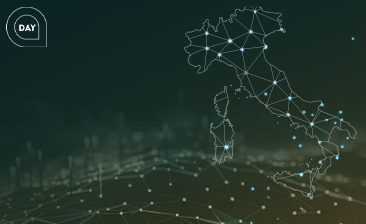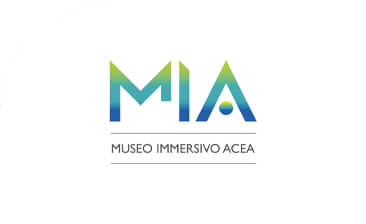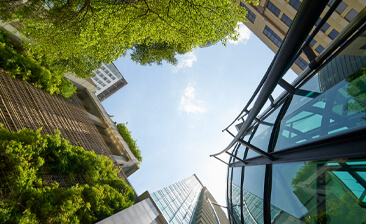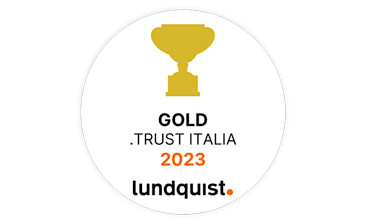
Acea for World Energy Saving Day
Companies must know how to look to the future and intervene so that infrastructures evolve while preserving quality and increasing reliability and adaptability, making the most of the possibilities offered by new technologies.
Investments in sustainable infrastructures and innovation are a fundamental requirement for the achievement of Goal 9 of the 2030 Agenda, as they favour an economic growth which is inclusive and respectful of the environment, while at the same time promoting social well-being. Goal 9 aims to build resilient, reliable and quality infrastructures, reconfigure industries in a sustainable way and encourage innovation. This goes for all countries, with a particular focus on the emerging ones.
By 2030, industries will have to aim to increase their efficiency in the use of resources, adopting technologies and production processes that are cleaner and healthier for the environment.
It is therefore necessary to invest in scientific research, develop the technological capabilities of the industrial sector, with a positive impact on the sustainability of processes and environmental protection, and increase training on innovation.
The promotion of a business model that affects the natural environment as little as possible is strongly linked to prevention, minimisation of impacts, the construction of more resilient infrastructures and more sustainable production processes, thanks to investments in technological innovation and research. These processes represent a strategic choice for the sustainable development of the business activity, and are among the main indicators of Acea's contribution to the achievement of the targets promoted by Goal 9 of the 2030 Agenda.
The Group promotes a virtuous link between technology, management and evolution of processes and infrastructures so that they are increasingly reliable and allow the provision of quality services, combining innovation and attention to the local area.
In line with SDG 9 of the 2030 Agenda, Acea's strategy provides for a strengthening of infrastructure investments, with particular attention to technological and scientific innovation. When it comes to water and electricity infrastructures, the large strategic works and network modernisation interventions — instrumental to the better resilience of the entire service management and delivery system — are combined with technological innovation, with a strong contribution that comes from digitalisation, IoT, use of sensors, connectivity, remote control, and from the increased ability to interconnect data and information rapidly. This type of interventions, in addition to improving the adaptability of the infrastructures and therefore their reliability, allows for a more effective management, to the benefit of the quality of the service. This also reduces environmental impacts, for example with energy efficiency improvements, and improves the use of resources. Finally, the research and application of new technologies contributes significantly to the development of more sustainable industrial processes, particularly in the context of circular economy.
Acea is committed to the development of resilient and sustainable water and electricity infrastructures to guarantee security of supply, adjustment to climate change and support to the energy transition.
The definition of the term resilient is "the ability of a material to absorb shocks without breaking". A resilient infrastructure is capable of handling the impacts deriving from adverse climatic events and guaranteeing efficiency and reliability even if subjected to prolonged stress over time. It is also capable of adjusting to the evolution of the system, as, for example, in the case of electricity distribution grids that today, compared to the past, must be able to manage very different flows, connections and peaks of supply and demand.
To guarantee the resilience of its infrastructures, the Acea Group invests in technological innovation and in continuous preventive and predictive maintenance activities.
The Acea Group designs and carries out infrastructures development interventions through the company Areti, which manages the distribution and measurement of electrical energy in the municipalities of Rome and Formello, as well as the public, artistic and funerary lighting in Rome.
Thanks to its investments in the resilience of the grid and its digitisation, in addition to targeted actions to improve service continuity, the Group is committed to playing an active role for the energy transition.
These interventions, together with many other initiatives consistent with SDG 9, aim at making the infrastructures increasingly resilient and responding to the progressive electrification of consumption, i.e. the ever-increasing use of electricity as a primary source for services that were previously powered by other energy sources.
The goal is also to rationalise and strengthen the grids, therefore helping to improve service continuity.
As part of the wider plan of modernisation and resilience interventions on electricity infrastructures, in 2022, with reference to climate change, 58 km of MV cables were modernised, and 88 secondary substations were rebuilt to improve their resilience to critical factors such as “heat waves” and “floods”.
Data as at 31 december 2022
In line with the content of SDG 9, particular attention is paid to the resilience of water infrastructures, technological innovation and digitisation of processes.
The digitisation of infrastructures is one of the key elements for the protection of water resources, as it improves their management with a view to operational efficiency. It is in fact possible, thanks to the use of sensors, to know the state of the infrastructures in real time through preventive and predictive maintenance activities.
Also the division in districts of the water networks allows for their better management by making the service more efficient and optimised, making it possible to have a precise calculation of the incoming and outgoing water, keeping the variations over time monitored and, also in this case, allowing timely actions through preventive interventions.
As regards the aqueduct system of the city of Rome, the goal of increasing the resilience of the system is being pursued through the creation of new strategic works on the Peschiera and Marcio aqueducts.
In 2022, interventions were also launched to create aqueduct interconnections which will ensure greater resilience of the water networks and an improvement in the service provided.
Discover the latest news and initiatives of the Acea Group

Acea for World Energy Saving Day

Visit the virtual museum about the history of the Acea Group

The channel for the commercial requests on land urbanisation

Acea turns the spotlight on the Rome Film Festival 2023

Acea is in the "Gold class" in the .trust research

Read more about our culture of inclusiveness